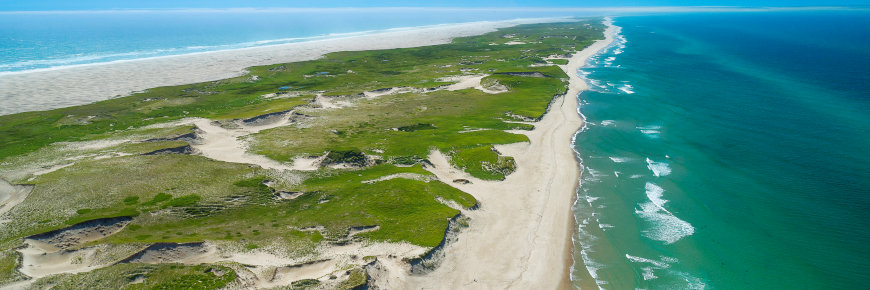
Sable Island National Park Reserve (photo: Brinton Photography)
Isle of wonders
Sable Island National Park Reserve is a hotspot for unique species and rare natural phenomena.
It’s a place of 400 000 grey seals, 500 wild horses… and one tree.
A crescent-shaped island 42 kilometres long, Sable Island National Park Reserve lies 161 kilometres from Nova Scotia’s coast, at the edge of the continental shelf.
Islands are often fascinating to scientists because their isolation over evolutionary time makes them home to unique species. Sable Island is no exception—and its 400 years of human history have added to the rich biological mix.
Here are a few of the natural curiosities that make this elemental place such a draw for scientists and visitors alike.
1. A bee the size of an ant
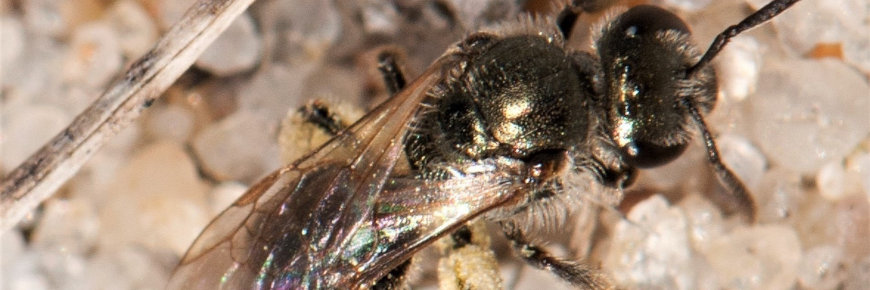
The Sable Island sweat bee doesn’t have an easy time of it. The winds make flying difficult, and the island’s famous wild horses can trample the plants that the bees need for pollen and nectar.
But scientists believe that the sweat bee has persisted here since the retreat of the last glacial age, when sea levels rose high enough to prevent the insect from reaching the mainland.
A vital pollinator for the island, the bee is found nowhere else in the world and is classified as threatened under Canada’s Species at Risk Act. Parks Canada is working with its partners—including the Sable Island Institute, the Nova Scotia Museum of Natural History, the University of Manitoba and Brock University—to better understand the biology of the bee.
And no, the sweat bee doesn’t sweat. This family of bees got its name because some species like to drink the perspiration on human skin.
2. The grey seal nursery
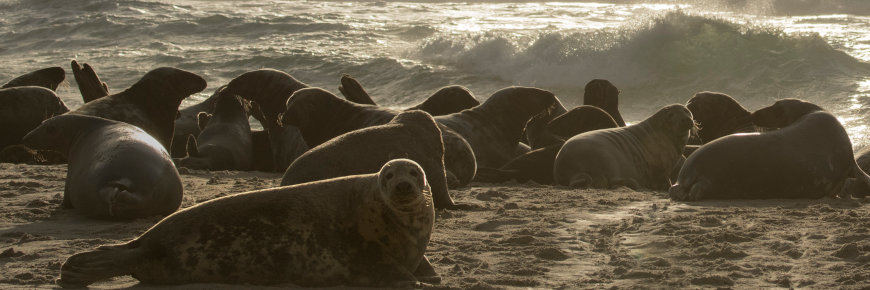
In good weather or bad, your senses are constantly being reawakened on Sable Island.
Breakers crash on the shore and withdraw with a soft hiss. The air is filled with the scents of seaweed and aromatic wild plants like bayberry and juniper. On clear days, the horizon seems as big as the world.
During the seal breeding season, this spree for the senses is cranked to eleven.
From late December to early February, the beaches of Sable Island can get a little crowded when as many as 400 000 grey seals come ashore to mate and give birth. Being free of predators, the island makes a perfect nursery. In fact, it’s the biggest grey seal breeding colony in the world.
Describing this colony, Paul LeBlanc, an assessment technician for Fisheries and Oceans Canada, writes, “the cacophony of moaning, hissing and snarling... is deafening.” As for the smell, he adds, “this is something that can only be described by experiencing it yourself.”
3. The flying handful of sand

Sable Island is part of a key migratory flyway, with many bird species (over 350) recorded. And there’s one bird that everybody is always glad to see—the Ipswich sparrow.
There’s a mystery associated with this sand-coloured bird, also called the “Savannah Sparrow princeps subspecies.” It winters up and down the east coast of North America but breeds almost exclusively on Sable Island.
This little bird, writes Andy Horn of Dalhousie University and the Sable Island Institute, “doggedly gambles every spring that it will find that sole sandspit in the great wide ocean.”
To better understand the breeding and migration habits of the Ipswich sparrow, researchers band the birds and then try to spot as many individuals as possible in the species’ wintering and nesting habitats.
In the spring of 2020, the Ipswich sparrow research crew was unable to travel to Sable Island because of the COVID-19 pandemic, and so the spring “resighting” survey was carried out by Parks Canada employees.
4. The asymmetrical ghost
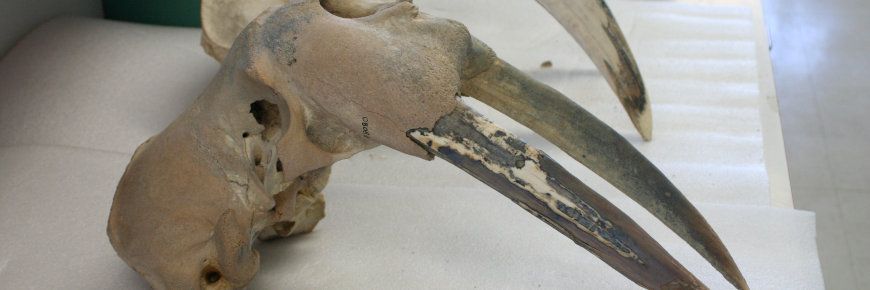
Any remote island will have its relics and vanished presences. The shifting sand dunes of Sable Island sometimes uncover tusks, the remnants of a walrus population that was once found throughout the Maritimes. These animals were hunted heavily for their ivory and were last seen on the island in the late 1800s.
Biologist Brenna Frasier of St. Mary’s University in Halifax has argued that this Maritimes walrus was distinct—both physically and genetically—from its modern Arctic counterparts.
Evidence from Sable Island suggests that the left tusk of Maritimes walruses tended to be shorter than the right. Dr. Frasier and her co-authors theorize that this shows a “handedness” among the Maritimes population. Just as humans might favour one hand, the walruses favoured one flipper and tusk for foraging on the ocean floor.
5. The tree that’s barely there.
.jpg)
Sable Island has only one tree—and it’s not exactly a landmark. “It’s pretty scraggly,” says Dan Kehler, the Parks Canada ecologist for Sable Island. “I have to point it out to visitors because they often miss it.”
The tree is a Scots pine, the only survivor of a number that were planted in the 1950s. (Wind, unstable ground and salt spray make the island unfriendly to saplings.)
The tree doesn’t seem to play much of a role in the island ecosystem, but it does feature in the human sub-ecosystem. Every Christmas, the island’s caretakers lovingly decorate it, and the tough little pine becomes an emblem of stunted good cheer.
6. And of course... the horses
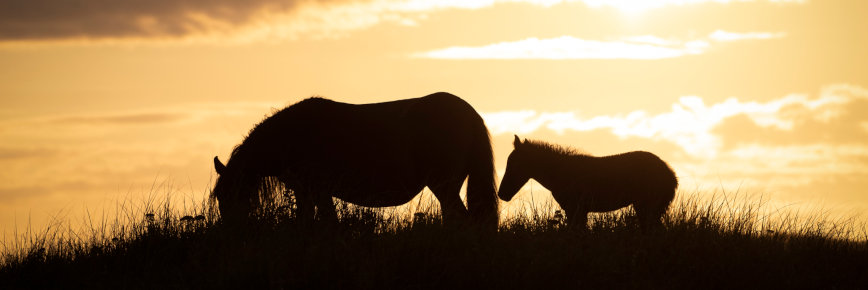
Even if you don’t know anything else about Sable Island, you have probably heard about its wild horses. They’ve been painted, photographed, filmed, put into stories and captured on money (a five-dollar coin from the Royal Canadian Mint).
Sable Island horses are the remnant herd of domestic horses that were likely first brought to the island in the 1700s. They are considered a “naturalized species” and are part of the ecosystem. They do not live and breed as domesticated animals and do not depend on humans for survival.
As such, the horses are now protected under the Canada National Parks Act and the National Parks of Canada Wildlife Regulations.
A wild and windswept island
Related links
- Date modified :